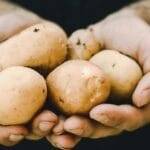Main Points In Hindi (मुख्य बातें – हिंदी में)
-
बारिश का प्रभाव: जुलाई-सितंबर में अधिक बारिश के कारण भारतीय किसानों ने खरपतवारों की वृद्धि को नियंत्रित करने के लिए जड़ी-बूटियों का अधिक उपयोग किया है, जिससे खररफ फसल के मौसम में उनके उपयोग में वृद्धि हुई है।
-
जड़ी-बूटियों की बिक्री में इजाफा: कृषि रसायन निर्माताओं को इस खरीफ सीजन में जड़ी-बूटियों की बिक्री में वृद्धि देखने को मिल रही है, जबकि कीटनाशकों और कवकनाशियों की बिक्री में कमी आई है।
-
श्रमिकों की कमी और लागत: श्रमिकों की कमी और बढ़ती मजदूरी के कारण, जो उत्पादक पहले जड़ी-बूटियों का उपयोग नहीं करते थे, वे भी अब खरपतवारों को नियंत्रित करने के लिए इनका उपयोग कर रहे हैं।
-
परंपरागत तरीकों से बदलाव: किसानों द्वारा शाकनाशी के तेज़ी से बढ़ते उपयोग के कारण, वे पारंपरिक तरीकों से रासायनिक अनुप्रयोगों की ओर बढ़ रहे हैं, खासकर उच्च श्रम लागत के कारण।
- भविष्य की संभावनाएँ: भारत में जड़ी-बूटियों के उपयोग की दर वैश्विक मानकों की तुलना में कम है, लेकिन कृषि-इनपुट निर्माताओं का मानना है कि फसल सुरक्षा उद्योग 2027 तक ₹355 बिलियन तक पहुँचने की उम्मीद है, जिससे इस क्षेत्र में वृद्धि की संभावना दिखाई देती है।
Main Points In English(मुख्य बातें – अंग्रेज़ी में)
Here are the main points from the provided article:
-
Increased Herbicide Usage: Due to excessive rainfall during the July-September months, Indian farmers are reportedly increasing their use of herbicides to manage the growth of weeds in the Kharif cropping season.
-
Sales Trends: Agricultural chemical manufacturers have observed a rise in herbicide sales this Kharif season, even as sales of insecticides and fungicides have declined.
-
Impact of Labor Costs: Higher labor costs and shortages are leading even traditional farmers, who previously did not use herbicides, to adopt these chemical solutions for weed management.
-
Market Demand: Companies like BigHaat are witnessing significant demand for herbicides driven by challenges in weed management due to heavy rains, indicating a shift towards more effective chemical applications.
- Growth in Agriculture Sector: The crop protection sector in India is expected to reach ₹355 billion by 2027, showing a compound annual growth rate of 7.6% over the past five years, although herbicide usage remains relatively low compared to pesticides and fungicides.


Complete News In Hindi(पूरी खबर – हिंदी में)
जुलाई-सितंबर के प्रमुख महीनों के दौरान हुई अधिक बारिश के कारण इस ख़रीफ़ फसल के मौसम में खरपतवारों की वृद्धि को नियंत्रित करने के लिए भारतीय किसानों द्वारा जड़ी-बूटियों का उपयोग बढ़ गया होगा।
कृषि रसायन निर्माताओं ने इस ख़रीफ़ सीज़न में जड़ी-बूटियों की बिक्री में वृद्धि देखी है, भले ही कीटनाशकों और कवकनाशी जैसी अन्य श्रेणियों में बिक्री कम रही।
“अत्यधिक बारिश शाकनाशियों के लिए अच्छी होगी। अगस्त-सितंबर के दौरान लगातार बारिश के कारण खरपतवारनाशी की बिक्री अच्छी रही। हालाँकि, इस अवधि के दौरान फफूंदनाशकों और कीटनाशकों की बिक्री प्रभावित हुई, ”यूपीएल एसएएस के सीईओ आशीष डोभाल ने कहा।
इसके अलावा, डोभाल ने कहा कि देश में अन्य कृषि रसायनों की तुलना में शाकनाशी एक श्रेणी के रूप में तेजी से बढ़ रही है। डोभाल ने कहा कि श्रमिकों की कमी और बढ़ती मजदूरी के कारण, जिन उत्पादकों ने कभी भी शाकनाशियों का उपयोग नहीं किया था, वे भी खरपतवार की वृद्धि को नियंत्रण में रखने के लिए इनका उपयोग कर रहे हैं।
एग्रीटेक फर्म बिगहाट, जो देश भर के उत्पादकों को विभिन्न कृषि इनपुट सीधे बेचती है, ने इस खरीफ फसल के मौसम में अधिक बारिश के कारण जड़ी-बूटियों में महत्वपूर्ण मांग और वृद्धि देखी है।
“हाल ही में हुई बारिश के कारण खरपतवार प्रबंधन में चुनौतियाँ पैदा हुई हैं, जिससे कुशल शाकनाशी समाधानों की आवश्यकता पर बल दिया गया है। शाकनाशी की बिक्री में वृद्धि से संकेत मिलता है कि किसान सक्रिय रूप से इन चुनौतियों का समाधान कर रहे हैं, संभावित रूप से पारंपरिक तरीकों से अधिक प्रभावी रासायनिक अनुप्रयोगों की ओर स्थानांतरित हो रहे हैं, ”बिगहाट में कृषि विज्ञान के प्रमुख श्रीकांत वेमुला ने कहा।
वेमुला ने कहा, “बढ़ती श्रम लागत के कारण मैनुअल से रासायनिक-आधारित निराई के तरीकों में भी बदलाव हो रहा है, जिसके कारण एट्राज़िन, पैराक्वाट, ग्लाइफोसेट और ग्लूफ़ोसिनेट अमोनियम 13.5 जैसे उभरते पूर्व और बाद के जड़ी-बूटियों की मांग बढ़ गई है, जो लोकप्रियता हासिल कर रहे हैं।” .
क्रिस्टल क्रॉप प्रोटेक्शन लिमिटेड के सीईओ अंकुर अग्रवाल ने कहा कि उनकी कंपनी ने भी खरीफ फसल के मौसम के दौरान जड़ी-बूटियों की बिक्री में उच्च रुझान देखा है।
उन्होंने कहा, “इस साल कीटनाशकों की तुलना में जड़ी-बूटियों की बिक्री बेहतर रही।”
वैश्विक रुझानों की तुलना में भारत में जड़ी-बूटियों का उपयोग अभी भी कम है। पादप संरक्षण, संगरोध और भंडारण निदेशालय के 2022-23 के आंकड़ों के अनुसार, देश में उपयोग किए जाने वाले फसल सुरक्षा समाधानों में कीटनाशकों की हिस्सेदारी 40 प्रतिशत है, इसके बाद फफूंदनाशकों की हिस्सेदारी 36 प्रतिशत और खरपतवारनाशकों की हिस्सेदारी 19 प्रतिशत है, जबकि अन्य का उपयोग किया जाता है। बाकी के लिए।
कृषि-इनपुट निर्माताओं के संगठन क्रॉपलाइफ इंडिया के अनुसार, देश में फसल सुरक्षा उद्योग 2027 तक ₹355 बिलियन तक पहुंचने की उम्मीद है। पिछले पांच वर्षों में, भारतीय फसल सुरक्षा बाजार चक्रवृद्धि वार्षिक वृद्धि दर से बढ़ा है। 7.6 प्रतिशत के साथ बाजार 2018 में ₹197.4 बिलियन से बढ़कर 2022 में ₹264.8 बिलियन हो गया।
Complete News In English(पूरी खबर – अंग्रेज़ी में)
Excessive rainfall during the July-September period has likely led to an increase in the use of herbicides by Indian farmers this Kharif cropping season to control weed growth.
Agricultural chemical manufacturers have noticed a rise in herbicide sales this Kharif season, even while sales of pesticides and fungicides have declined.
“Heavy rains are beneficial for herbicides. Due to continuous rainfall in August and September, sales of weed killers have been good. However, the sales of fungicides and pesticides have been affected during this time,” said Ashish Dobhal, CEO of UPL SAS.
Additionally, Dobhal noted that herbicides are growing rapidly as a category compared to other agricultural chemicals in the country. He mentioned that due to labor shortages and rising wages, even producers who previously did not use herbicides have started using them to manage weed growth.
Agri-tech firm BigHaat, which sells various agricultural inputs directly to farmers across the country, has observed significant demand for herbicides due to the increased rainfall this Kharif season.
“Recent rains have created challenges in weed management, highlighting the need for effective herbicide solutions. The rise in herbicide sales indicates that farmers are actively addressing these challenges, likely shifting towards more effective chemical applications rather than traditional methods,” said Srikanth Vemula, Head of Agricultural Science at BigHaat.
Vemula added, “Rising labor costs are also driving the transition from manual weeding to chemical-based methods, which has led to increased demand for emerging pre- and post-emergent herbicides like Atrazine, Paraquat, Glyphosate, and Glufosinate Ammonium.”
Ankur Agarwal, CEO of Crystal Crop Protection Limited, mentioned that their company has also seen a high trend in herbicide sales during the Kharif season.
He stated, “This year, the sales of herbicides have performed better compared to pesticides.”
Despite this, the use of herbicides in India remains lower than global trends. According to the Directorate of Plant Protection, Quarantine and Storage’s 2022-23 data, pesticides account for 40% of crop protection solutions in the country, followed by fungicides at 36% and herbicides at 19%, with the remaining percentage attributed to others.
According to CropLife India, an organization of agricultural input manufacturers, the crop protection industry in the country is expected to reach ₹355 billion by 2027. Over the past five years, the Indian crop protection market has grown at a compound annual growth rate of 7.6%, increasing from ₹197.4 billion in 2018 to ₹264.8 billion in 2022.








